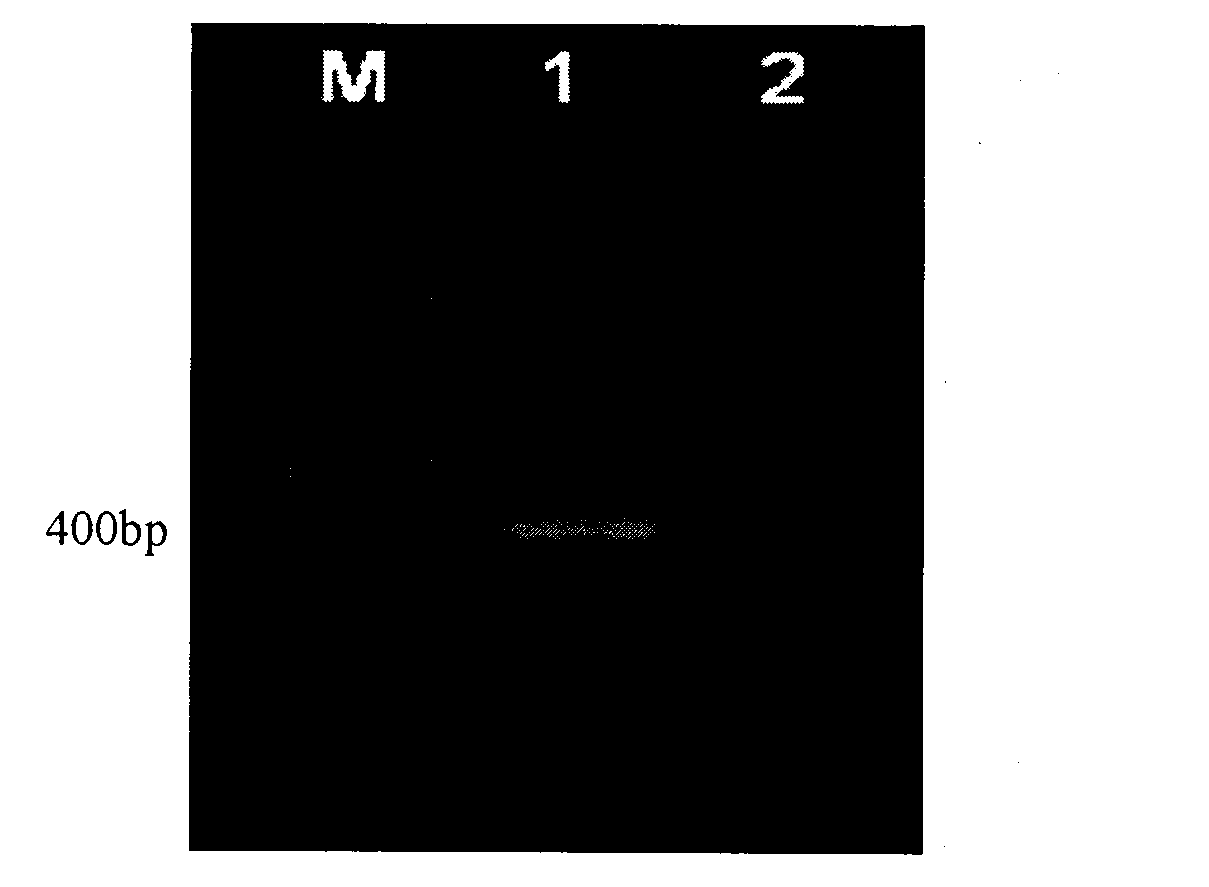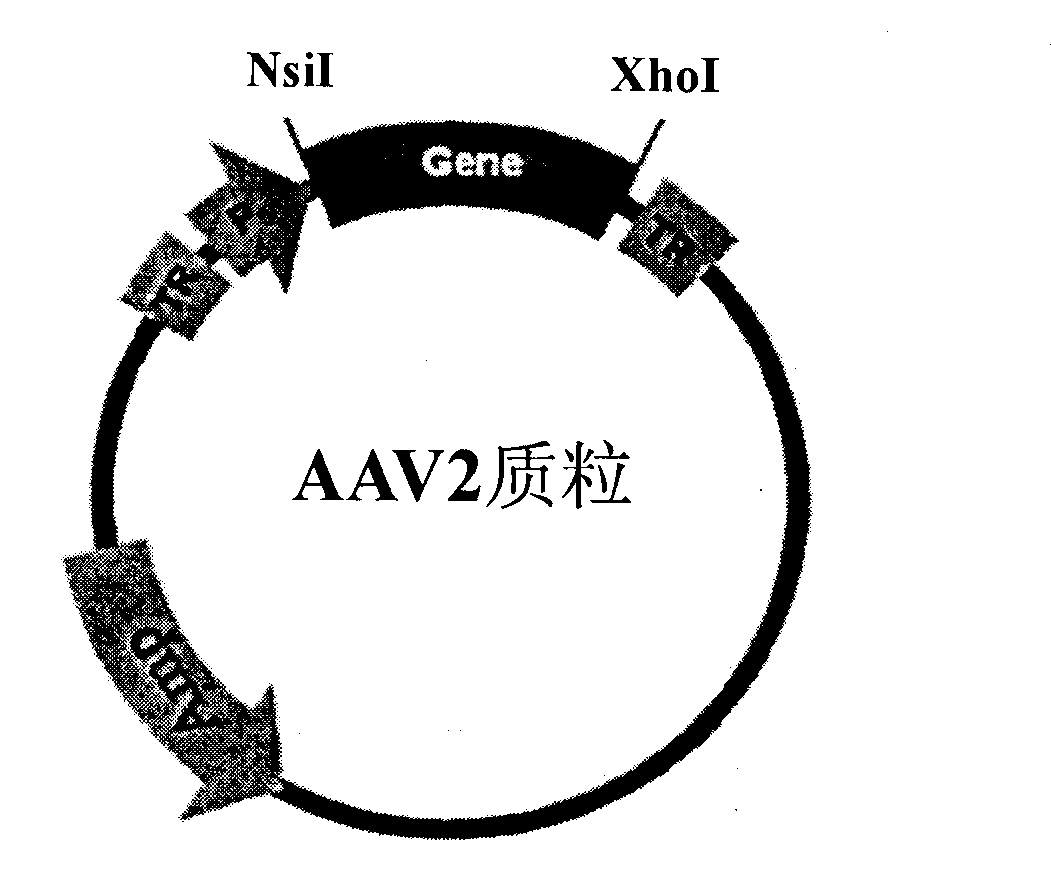Construction method of recombinant adeno-associated virus vector of targeting interference SOCS1 gene and application of construction method
A technology of SOCS1 and viral vectors, applied in the fields of molecular biology and biomedicine, can solve the problems of short duration, small molecule RNA is easily degraded by RNase, and great difference in transfection efficiency
- Summary
- Abstract
- Description
- Claims
- Application Information
AI Technical Summary
Problems solved by technology
Method used
Image
Examples
Embodiment 1
[0024] Example 1 Obtaining of target gene fragments
[0025] The primers and DNA sequences used were synthesized by Shanghai Sangon Biotechnology Company, and the DNA sequencing was completed by Huada Gene Company.
[0026] hU6 promoter primer sequences: U6F: 5'-ATATGCATCCAAGGTCGGG CAGGAAGAGGGCCTAT-3' and U6R: 5'-ATCTCGAGATCGATGC GGCCGCCA TATGGA-3'.
[0027] According to the human SOCS1 gene sequence (NM_003745) registered in NCBI Genebank and the shRNA design principles, the RNAi Design software of Ambion Company was used to design and synthesize an effective RNAi sequence for the SOCS1 gene:
[0028] 5′-CAGCTTAACTGTATCTGGA-3′
[0029] The DNA sequence used to transcribe the shRNA is:
[0030] Sense strand: 5′-TCGAC CAGCTTAACTGTATCTGGA AAGC TCCAGATACAGTTAAGCTGTTTTTT-3′;
[0031] Antisense strand: 5′-CTAGAAAAAA CAGCTTAACTGTATCTGGA GCTT TCCAGATACAGTTAAGCTG G-3′;
Embodiment 2
[0032] Embodiment 2 pAAV2-SOCS1-shRNA vector construction and identification
[0033] A. Using PCR amplification technology to amplify the hU6 promoter
[0034] Using primer U6F: 5′-ATATGCATCCAAGGTCGGGCAGGAAGAGGG CCTAT-3′
[0035] and U6R: 5′-ATCTCGAGATCGATGCGGCCGCCA TATGGA-3′,
[0036] The sequence fragment containing the hU6 promoter was amplified from the PAVU6+27 plasmid by PCR reaction and identified by agarose gel electrophoresis ( figure 1 ), gel recovery and purification of the product.
[0037] B. After the amplified fragment was digested by SalI and XbaI, it was ligated with the SOCS1-shRNA interference sequence, identified by agarose gel electrophoresis, and the purified product was recovered from the gel to obtain the complete hU6 promoter and interference sequence, and sequenced in parallel Identification.
[0038] C. Digest pAAV2 and hU6 promoters and interference sequences with XhoI and NsiI, recover large fragments respectively, insert hU6 promoters and int...
Embodiment 3
[0043] Example 3 Detection of recombinant adeno-associated virus transfection efficiency
[0044]Aseptically extract 50 mL of peripheral blood from healthy volunteers, anticoagulate with heparin, separate peripheral blood mononuclear cells (PBMC) by Ficoll density gradient method, culture them in 6-well plates, adhere to the wall for 5 hours, and gently wash away the suspension Lymphocytes, the remaining adherent cells are DC precursor cells, add 2.5ml of AIM-V medium containing GM-CSF (800U / mL) to each well, change half of the medium every other day, and add from the second day of culture IL-4 (1000U / mL). DCs were infected with recombinant adeno-associated virus (rAAV / shRNA) on the third day of culture, and the experiment was divided into interference group, negative control group (NC) and blank control group (Mock). The multiplicity of infection (MOI) was 100. After 8 hours, the virus-containing medium was removed and replaced with fresh AIM-V medium, and TNF-a (20ng / mL) wa...
PUM
 Login to View More
Login to View More Abstract
Description
Claims
Application Information
 Login to View More
Login to View More - R&D
- Intellectual Property
- Life Sciences
- Materials
- Tech Scout
- Unparalleled Data Quality
- Higher Quality Content
- 60% Fewer Hallucinations
Browse by: Latest US Patents, China's latest patents, Technical Efficacy Thesaurus, Application Domain, Technology Topic, Popular Technical Reports.
© 2025 PatSnap. All rights reserved.Legal|Privacy policy|Modern Slavery Act Transparency Statement|Sitemap|About US| Contact US: help@patsnap.com



